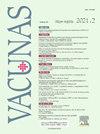人乳头瘤病毒疫苗接种对消除子宫颈癌的影响
Q3 Medicine
引用次数: 0
摘要
某些人类乳头瘤病毒(HPV)基因型是宫颈癌的必要原因,并与部分肛门生殖器癌和头颈部癌的病因有关。目前,国际癌症研究机构已将12种HPV类型确定为致癌物,其中HPV16是最具致癌性的基因型。人类乳头状瘤病毒的致癌分类是基于过去几十年进行的广泛的流行病学研究和生物学证据,并得益于寻求揭示宫颈癌病因的科学家之间的强有力合作。hpv 16、18、31、33、35、45、52和58是90%以上宫颈癌的病因。自2006年以来,欧洲已批准了三种有效的预防性疫苗,并已证明具有免疫原性、安全性、有效性和有效性。人类乳头瘤病毒作为宫颈癌的必要原因的证明也导致了筛查策略的改进,例如引入原发性人类乳头瘤病毒检测。从病因到预防的全面癌症研究对全球公共卫生政策产生了重大影响,以至于世界卫生组织在2020年发起了消除宫颈癌的运动,这可能是肿瘤学领域从未考虑过的一个里程碑。本文章由计算机程序翻译,如有差异,请以英文原文为准。
Impacto de la vacunación frente a virus del papiloma humano: hacia la eliminación del cáncer de cuello de útero
Certain human papillomavirus (HPV) genotypes are a necessary cause of cervical cancer and are linked to the etiology of a fraction of anogenital and head and neck carcinomas. Currently, twelve HPV types have been classified as definitively carcinogenic by the International Agency for Research on Cancer, of which HPV16 is the most carcinogenic genotype. The carcinogenic classification of HPVs is based on extensive epidemiological studies and biological evidence conducted over the past decades and thanks to the strong collaboration between scientists seeking to uncover the etiology of cervical cancer. HPVs 16, 18, 31, 33, 35, 45, 52, and 58 are responsible for more than 90% of cervical cancers. Since 2006, three effective prophylactic vaccines have been approved in Europe, and have demonstrated to be immunogenic, safe, efficacious and effective. The demonstration of HPV as a necessary cause of cervical cancer has also led to the refinement of screening strategies, such as the introduction of primary HPV testing. Comprehensive cancer research, from etiology to prevention, has had a significant impact on global public health policies, so much so that in 2020 the World Health Organization launched the campaign to eliminate cervical cancer, a possible milestone never before considered in the field of oncology.
求助全文
通过发布文献求助,成功后即可免费获取论文全文。
去求助
来源期刊

Vacunas
Medicine-Infectious Diseases
CiteScore
3.90
自引率
0.00%
发文量
138
审稿时长
62 days
期刊介绍:
Sin duda una de las mejores publicaciones para conocer los avances en el campo de las vacunaciones preventivas, tanto en el ámbito de la investigación básica como aplicada y en la evaluación de programas de vacunaciones. Su alta calidad y utilidad la ha llevado a estar indexada en los prestigiosos índices IME y SCOPUS.
 求助内容:
求助内容: 应助结果提醒方式:
应助结果提醒方式:


